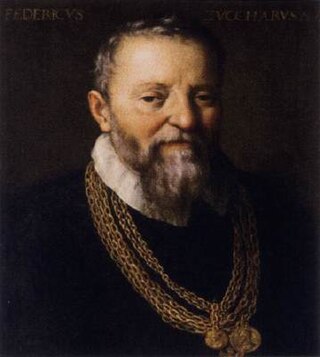
Federico Zuccaro, also known as Federico Zuccari, was an Italian Mannerist painter and architect, active both in Italy and abroad.
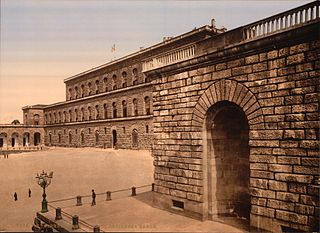
The Palazzo Pitti, in English sometimes called the Pitti Palace, is a vast, mainly Renaissance, palace in Florence, Italy. It is situated on the south side of the River Arno, a short distance from the Ponte Vecchio. The core of the present palazzo dates from 1458 and was originally the town residence of Luca Pitti, an ambitious Florentine banker.

The Palazzo Barberini is a 17th-century palace in Rome, facing the Piazza Barberini in Rione Trevi. Today, it houses the Galleria Nazionale d'Arte Antica, the main national collection of older paintings in Rome.
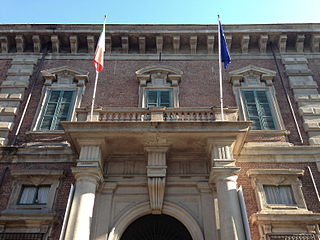
Palazzo Brera or Palazzo di Brera is a monumental palace in Milan, in Lombardy in northern Italy. It was a Jesuit college for two hundred years. It now houses several cultural institutions including the Accademia di Brera, the art academy of the city, and its gallery, the Pinacoteca di Brera; the Orto Botanico di Brera, a botanical garden; an observatory, the Osservatorio Astronomico di Brera; the Istituto Lombardo Accademia di Scienze e Lettere, a learned society; and an important library, the Biblioteca di Brera.
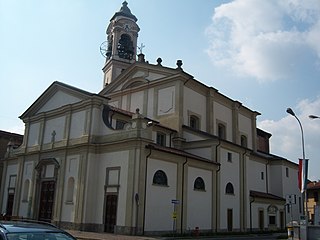
Cesano Maderno is a town and comune of about 39,309 inhabitants in the province of Monza and Brianza, Lombardy, northern Italy. The town borders with the towns of Seveso in the north, in the south with Bovisio-Masciago, in the east with Desio and Seregno, and in the west with Ceriano Laghetto and Cogliate. It received the honorary title of city with a presidential decree on 11 October 1999.
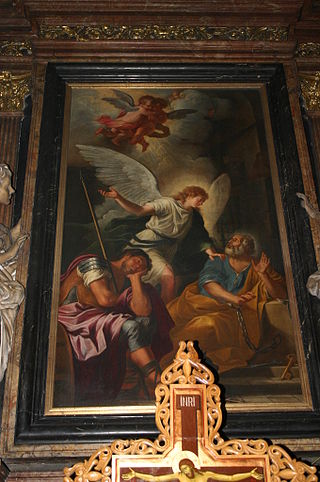
Giovanni Ghisolfi was an Italian painter of the Baroque period.

The Palazzo Litta, also known as the Palazzo Arese-Litta, is a Baroque structure in Milan, northern Italy, opposite San Maurizio al Monastero Maggiore, and dating from the period of Spanish rule of the city. In 2018, it served as a cultural center, housing exhibition spaces, offices, and a theater.

For the former Borromeo College in the United States see Saint Mary Seminary and Graduate School of Theology#Borromeo College
Federico Bianchi (1635–1719) was an Italian painter of the Baroque period, active in North Lombardy.

Pavia Cathedral is a church in Pavia, Italy, the largest in the city and seat of the Diocese of Pavia. The construction was begun in the 15th century on the site of two pre-existing Romanesque, "twin" cathedrals. The cathedral houses the remains of St. Sirus, first Bishop of Pavia, and a thorn purported to be from the Crown of Thorns worn by Christ. The marble facing of the exterior was never completed.
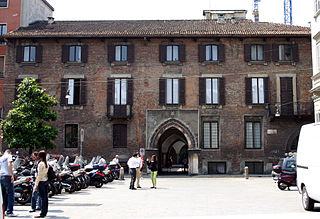
Palazzo Borromeo is a 14th-century building located at piazza Borromeo 12 in Milan, region of Lombardy, Italy. It was built as the home and business headquarters of the Borromeo family, merchant-bankers from Tuscany. Some of the building complex was badly damaged during World War II in Allied bombings of 1943 but was reconstructed and restored to its 15th-century appearance. It contains an important fresco cycle from the 1440s and is one of the finest examples of a Milanese patrician palace from the early Renaissance.

Domenico Pedrini was an Italian painter. Fiercely provincial in his geographic activity, Pedrini's works were mainly completed in and around Bologna, and yet his atavistic style strayed far afield into Bologna's strong Baroque ancestry.

The Rocca Borromeo di Angera, or Rocca d'Angera, also called Borromeo Castle, is a rocca on a hilltop above the town of Angera in the Province of Varese on the southern shores of Lago Maggiore. It has medieval origins and initially belonged to the Milanese archbishop. It passed then to the Visconti of Milan and later to the Borromeos, who are still the owners.

Villa Scotti-Cornaglia-Noseda-Bertani, commonly known as Villa Fiorita, is a building in Lombardy, Italy, where the Brugherio Comune's headquarters are housed.
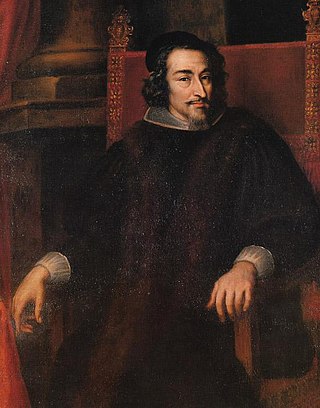
Bartolomeo III Arese count of Castel Lambro born in Milan on 23 October 1590 and died in the same city on 23 September 1674 was an Italian nobleman, politician, and prominent member of the House of Arese.

The Arese are a prominent family of the Milanese nobility.

Palazzo Mezzabarba is a palace in Pavia, Lombardy, a notable example of Lombard rococo. It has served as Pavia's city hall since 1875.
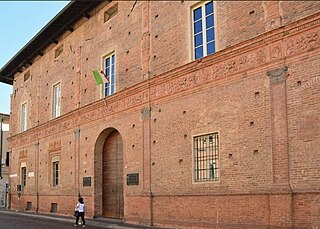
Palace Carminali Bottigella is a noble palace built by the ancient Beccaria family from Pavia. The original structure from the Sforza era was built between 1490 and 1499. The façade, which retains the original terracotta decorations, is one of the major examples of Renaissance civil building in Pavia.
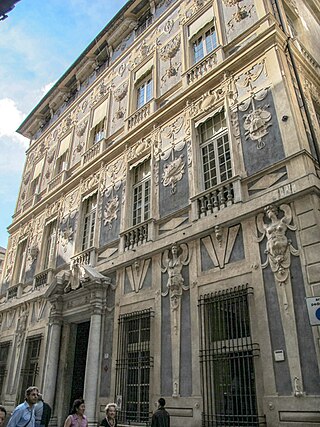
The palazzo Podestà or Nicolosio Lomellino is a building located in via Garibaldi (Genoa) at number 7 in the historical centre of Genoa, included on 13 July 2006 in the list of the 42 palaces inscribed in the Rolli di Genova that became World Heritage by UNESCO on that date.

"100 messaggi" is a song by Italian singer Lazza. It was written by Lazza, Drillionaire, Miles, Guillermo Moreno Romero and Denis Lesjak, and produced by Lazza, Drillionaire and Miles.




























